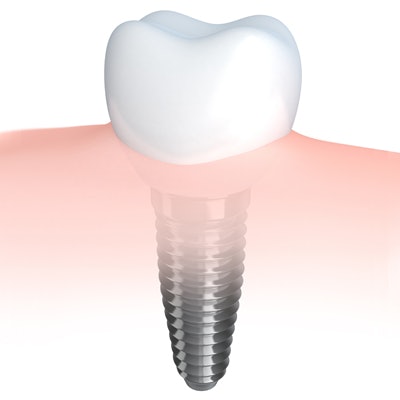
Pocket probing depth (PPD) and bleeding on probing (BOP) are useful for assessing periodontal conditions, but are these the best measurements to evaluate the health of peri-implant tissue? Researchers conducted a literature review and suggested using a different evaluation process.
European researchers noted that these assessments are often used to evaluate the dental implant/tissue interface and identify sites with mucositis and peri-implantitis. They wondered if disease definitions and diagnostic tools used in natural dentition also should be used with implant-retained restorations. Their review was published in the Journal of Clinical Medicine (July 29, 2019).
"The question is logical since there are no doubts that the periodontium and the peri-implant tissues ought to be regarded as two very different entities," wrote the review authors, led by Pierluigi Coli, DDS, PhD, of Edinburgh Dental Specialists in the U.K.
The researchers reviewed the available literature on the effectiveness of probing at dental implants for identifying peri-implant pathology.
Studies in humans failed to detect a positive correlation between the presence of periodontal signs of inflammation and peri-implant bone loss, they reported. In addition, the literature shows that bleeding on probing can be detected in the majority of healthy peri-implant sites and cannot be reasonably used to distinguish between peri-implant health and disease.
The researchers also wondered if probing around implants could potentially result in trauma to the peri-implant soft tissues. Several meta-analyses have shown that repeated abutment disconnections have been shown to cause crestal bone resorption around implants in both humans and animals, but this limited crestal bone resorption does not seem to be clinically relevant, they noted.
Rather than using periodontal indices as an indicator for the diagnosis of any treatment needs in implants, the review authors proposed a three-part process:
- Visual inspection of the peri-implant tissues for assessing oral hygiene and detecting potential redness and swelling
- Palpation of the peri-implant tissues for assessing the potential presence of swelling, bleeding, and suppuration
- Imaging for evaluating crestal bone level for comparison with previous radiographs to evaluate potential progressive bone loss
"There is substantial clinical evidence that PPD and BOP measurements are very poor indices of peri-implant tissue conditions and are questionable surrogate end points for implant failure," they wrote.



















